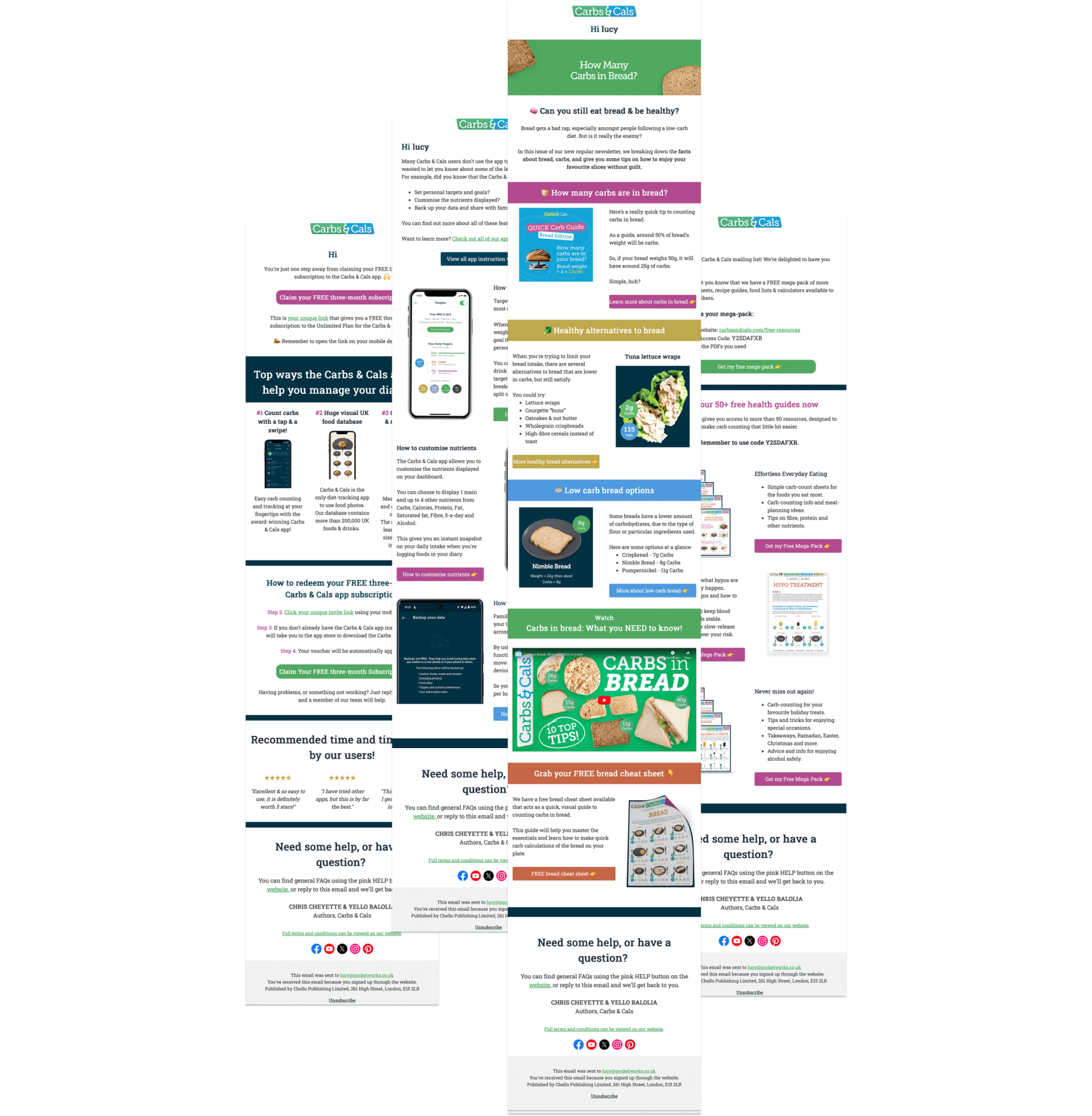Fruit plays an essential role in a healthy, balanced diet, providing vital vitamins, minerals, and fibre.
However, if you’re managing diabetes, following a low-carb diet, or simply want to make more informed food choices, understanding carbs in fruit is crucial.
While fruit contains naturally occurring sugars that contribute to its carb count, these aren’t the same as processed sugars found in many packaged foods.
This guide will help you navigate carbs in fruit with confidence, showing you how to enjoy a healthy diet and stay within your nutritional targets.
How many carbs in fruit?
Fruits are a vital part of a balanced diet and provide vitamins, minerals, and fibre, which are important for a healthy digestive system. Fruit is also a source of carbohydrates, and the amount of carbs in fruits can vary considerably. The carbs in fruit come from naturally occurring sugars.
It is important to keep in mind that not all carbs are the same. Fruit is packed with lots of other nutrients that are beneficial for your health and wellbeing.
Most fruit is naturally low in carbs compared to starchy foods. Similar to most other foods, the portion you eat will determine the total carbs you have. If you count carbs, you must plan for the serving size of the fruit you eat. 80g of fruit, which is around one handful, counts as one portion towards your 5-a-day.
* Despite technically being fruits, most people think of avocados and tomatoes more as vegetables. This is why we have decided to list them on our guide to carbs in vegetables instead.
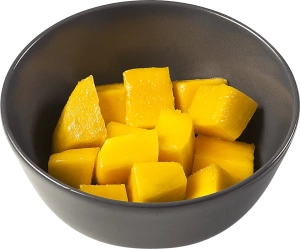
23g
Carbs
Mango
Weight = 160g
Carbs = 23g / Fibre 6g
How many carbs in berries?
Berries are a popular choice for dieters watching their carb intake, and have the lowest amount of carbs of any fruit. Strawberries and blackberries have the fewest carbs of all types of berries. Raspberries are also an excellent choice as they are a source of antioxidants, potassium and vitamin C.
Strawberries, blueberries, raspberries and blackberries can be expensive and are seasonal. However, even out of season, you can still buy frozen berries. Frozen berries are frozen quickly after being picked, meaning they still contain all the vitamins and nutrients.
By including a wide selection of berries in your meal plan, you will be provided with a range of vitamins and antioxidants. Try adding strawberries or raspberries to your morning porridge or have blueberries with some natural yoghurt, which makes a great snack option.
Raspberries, blackberries and strawberries can be eaten in small amounts on a very low carb diet, and you can eat them more freely if you’re on a more moderate low carb diet. Blueberries contain more carbs, so don’t overdo them on a very low carb diet.
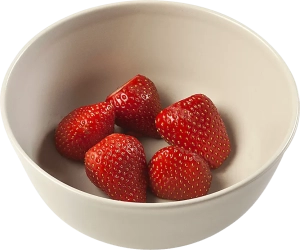
5g
Carbs
Strawberries
Weight = 80g
Carbs = 5g
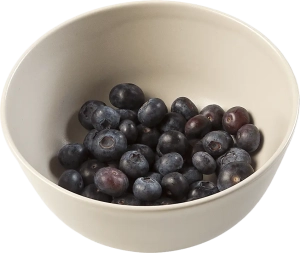
7g
Carbs
Blueberries
Weight = 80g
Carbs = 7g
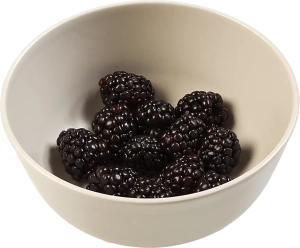
4g
Carbs
Blackberries
Weight = 80g
Carbs = 4g
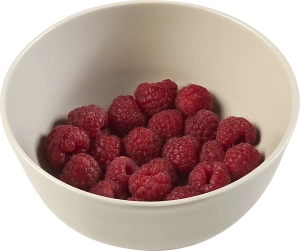
4g
Carbs
Raspberries
Weight = 80g
Carbs = 4g
* Some berries, such as blackberries, can be foraged for free at certain times of the year, as a great activity for the whole family!
How many carbs in bananas?
Bananas are higher in carbs than most other fruits, and many people with diabetes often believe that they should be avoided. However, serving size is always important when it comes to carbs, and fruit is no exception.
A smaller banana only has around 12 to 15 grams of carbohydrates, compared to a larger banana, which can have up to 30 grams of carbs. This means if you are aiming to reduce carbs, you should aim for smaller bananas when you are selecting a bunch.
Believe it or not, there are hundreds of types of bananas! However, we tend to only eat one type: the Cavendish.
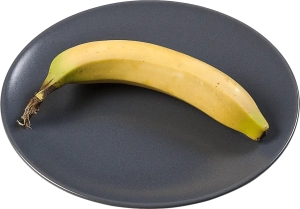
13g
Carbs
Small Banana
Weight = 100g
Carbs = 13g
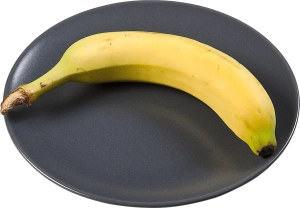
17g
Carbs
Medium Banana
Weight = 130g
Carbs = 17g

26g
Carbs
Large Banana
Weight = 190g
Carbs = 26g
How many carbs in watermelon?
Watermelon is a popular summer fruit that has a high water content and is a great low carb fruit option. A typical portion would be around 10 to 15 grams of carbs. It is also low in calories and a good source of vitamin A.
Due to its high glycaemic index, watermelon is more likely to cause a spike in blood glucose and may not be as filling as higher fibre fruit.

6g
Carbs
Weight = 80g
Carbs = 6g
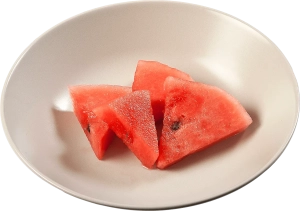
10g
Carbs
Weight = 140g
Carbs = 10g
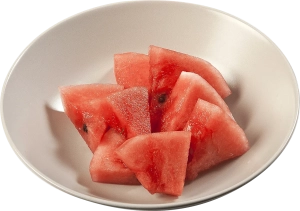
20g
Carbs
Weight = 280g
Carbs = 20g
How many carbs in cantaloupe & honeydew melons?
Both cantaloupe and honeydew melons are popular summer fruits and are both relatively low carb foods. They are also an excellent source of vitamin C as well as potassium, an electrolyte that helps to maintain good blood pressure and a healthy metabolism.
Cantaloupe and honeydew melons make great low carb snacks. For example, try adding either cantaloupe or honeydew to tuna salad, or wrap melon balls in prosciutto to create a salty-sweet appetiser.
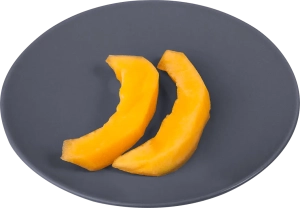
3g
Carbs
Cantaloupe Melon
Weight = 80g
Carbs = 3g
Low sugar fruits
Some low carb diets avoid fruit, as they have a higher carbohydrate content than most vegetables (because of the natural sugars that occur in fruits). However, these sugars are not unhealthy. In the right amount, they provide many health benefits without going overboard on carbs.
The three types of sugars found in fruits are glucose, sucrose and fructose. Glucose is one of the body’s preferred sources of energy and is necessary for brain and muscle function. On the other hand, it is recommended that you avoid consuming high levels of fructose. However, this only applies to added fructose, such as high fructose corn syrup, rather than what is naturally occurring in fruit. Sucrose is more commonly known as table sugar, though it does occur naturally in some fruits.
With such a variety of fruit options available, you should be able to find a place for fruit in your low carb diet. Grapefruit is particularly low in sugar, as are cherries. Rhubarb is another great example, and many low sugar cakes and desserts use rhubarb. One kiwi fruit only contains 5g of carbs, making it a great low sugar snack that is also very high in vitamin C. Pomegranate seeds sprinkled onto a salad or added to a couscous dish is a low sugar fruit with a powerful antioxidant punch.
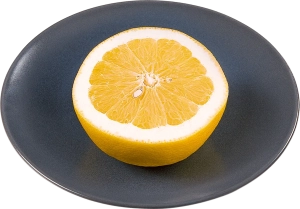
5g
Carbs
Grapefruit
Weight = 114g
Carbs = 5g
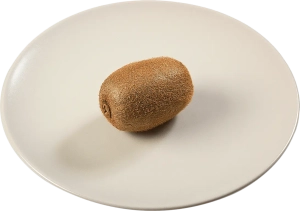
5g
Carbs
Kiwi
Weight = 55g
Carbs = 5g
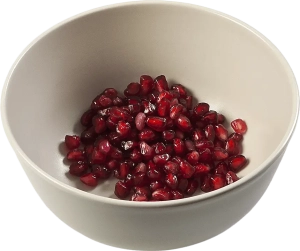
6g
Carbs
Pomegranate
Weight = 40g
Carbs = 6g
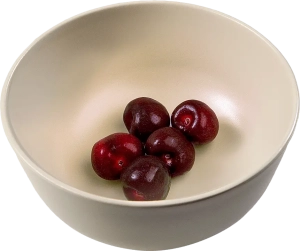
6g
Carbs
Cherries
Weight = 50g
Carbs = 6g
How much fruit is too much?
It is recommended that we have at least 5 portions of fruit and veg each day. However, if you are following a low carb diet, it might be wise to eat more of your intake from low carb vegetables and have less fruit, as vegetables also contain vitamins and antioxidants.
As most fruit is low in calories (while being high in fibre, vitamins and antioxidants), fruit makes a great snack, especially if it is in place of energy-dense processed snack foods such as cake, biscuits and chocolate. In addition, our Carbs & Cals Smoothies book provides great inspiration for how to include a wide range of fruits (and vegetables) into your day.
Similar to most other food groups, when it comes to carb counting, serving size is the most important part of weight loss. Eating a variety of fruit each day provides you with a good source of vitamins and antioxidants while also being low carb.
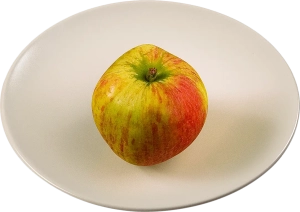
13g
Carbs
Apple
Weight = 131g
Carbs = 13g
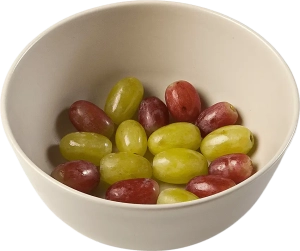
12g
Carbs
Grapes
Weight = 80g
Carbs = 12g
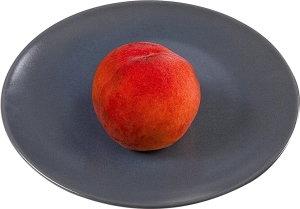
10g
Carbs
Peach
Weight = 138g
Carbs = 10g
Does dried fruit have carbs?
Dried fruit is a great way of preserving fruit so that it can be stored for a longer time. When fruit is dried, it reduces in size, but the carb content isn’t reduced, so 2-3 dried apricots have the same carb content as 2-3 fresh apricots. A 5-a-day portion of dried fruit weighs 30g (compared to 80g of fresh fruit), which contains around 15 to 20g of carbs.
Dried fruit is naturally packaged with all of the same health benefits as fresh fruit, and dried fruit can be a great addition to your diet to help you get your 5-a-day (or more!) fruit and veg. Sultanas on your porridge or some prunes as a mid-morning snack are an easy way to get some fibre into your day.
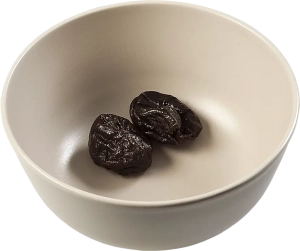
12g
Carbs
Prunes
Weight = 30g
Carbs = 12g
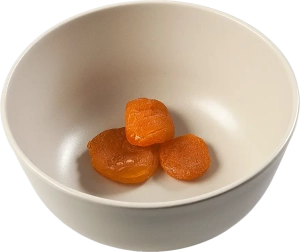
13g
Carbs
Dried Apricots
Weight = 30g
Carbs = 13g
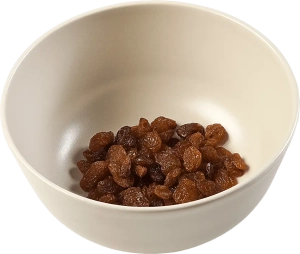
21g
Carbs
Sultanas
Weight = 30g
Carbs = 21g
SLURP UP YOUR 5-A-DAY!
Smoothies Book
The only smoothie recipe book you’ll ever need – includes low carb veg-based smoothies!
- 80 tasty smoothie recipes.
- Nutritional info clearly shown for each smoothie.
- 275 individual ingredient photos to create your own smoothie!
With this bestselling recipe book, whizzing up scrumptious and nutritious smoothies is a breeze!
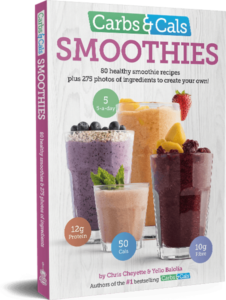
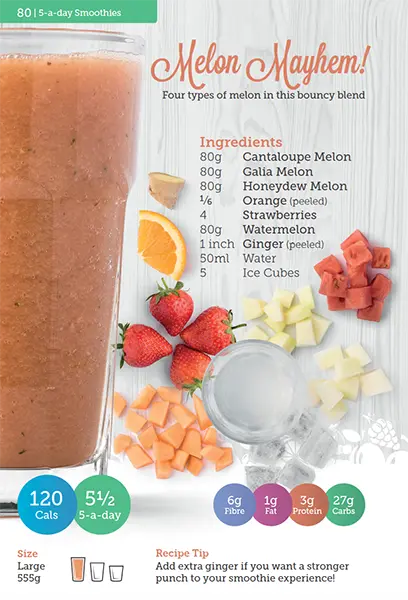
80 delicious smoothies!
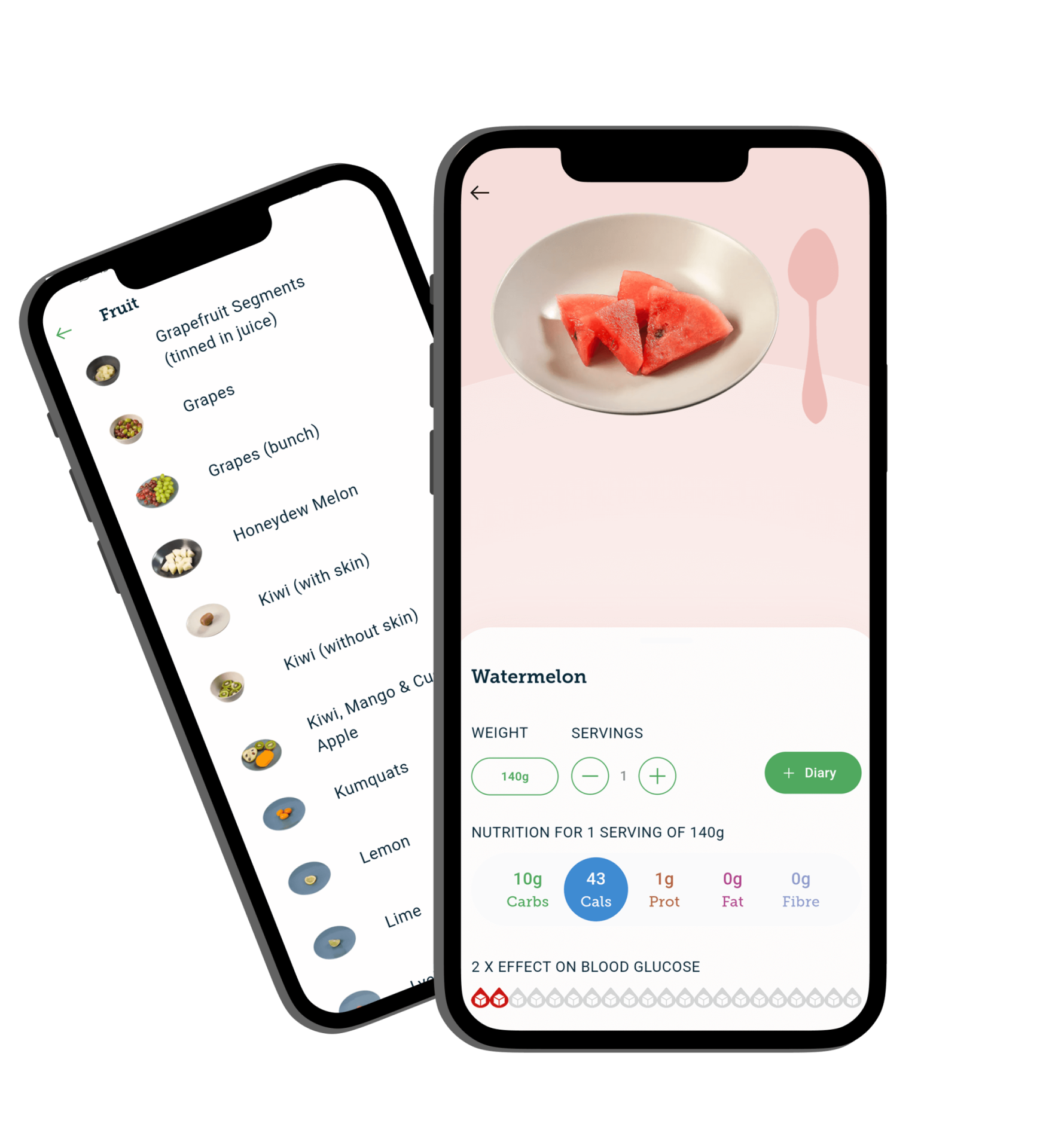
Sign up to the Carbs & Cals mailing list
Want to learn more about carb counting and the role of food in managing your health? Sign up to our mailing list!
